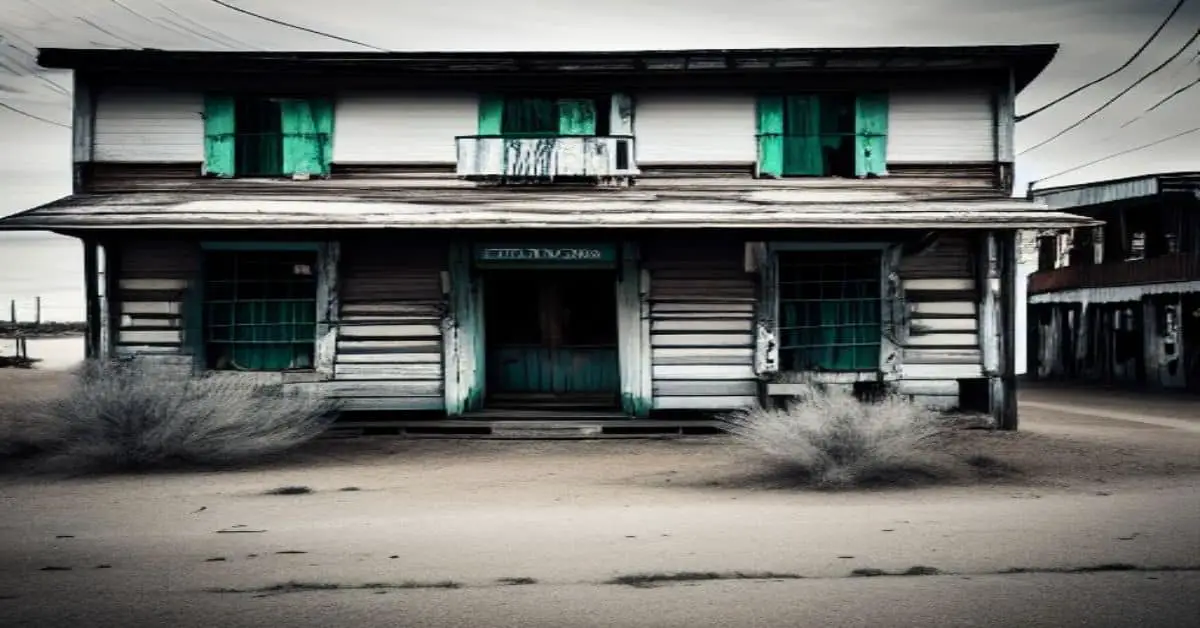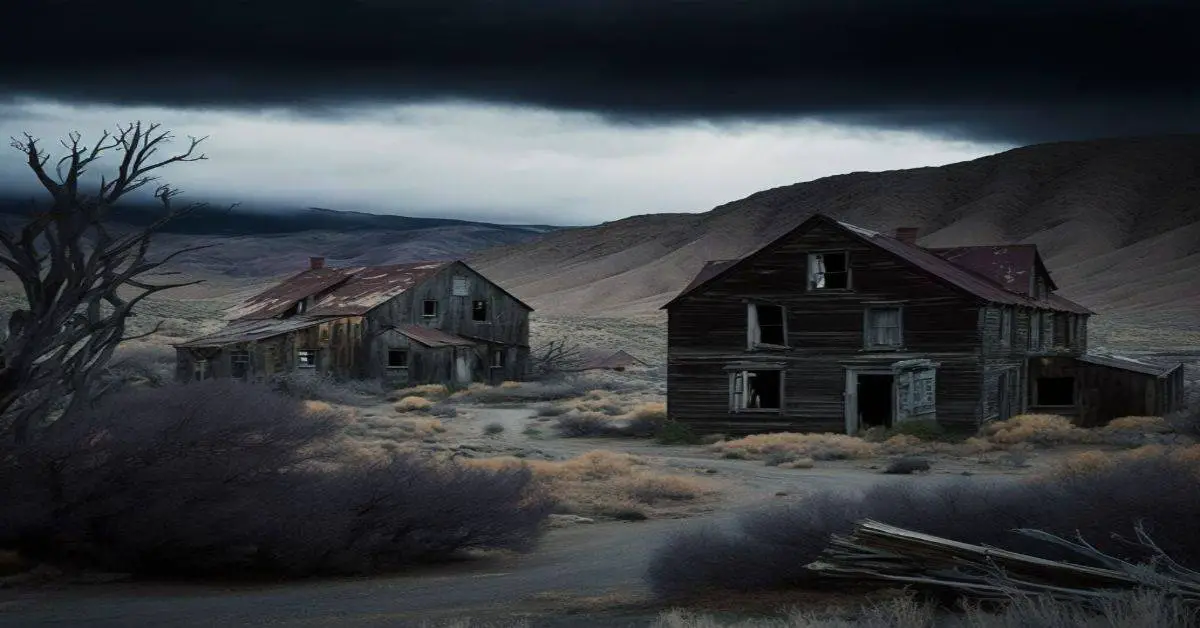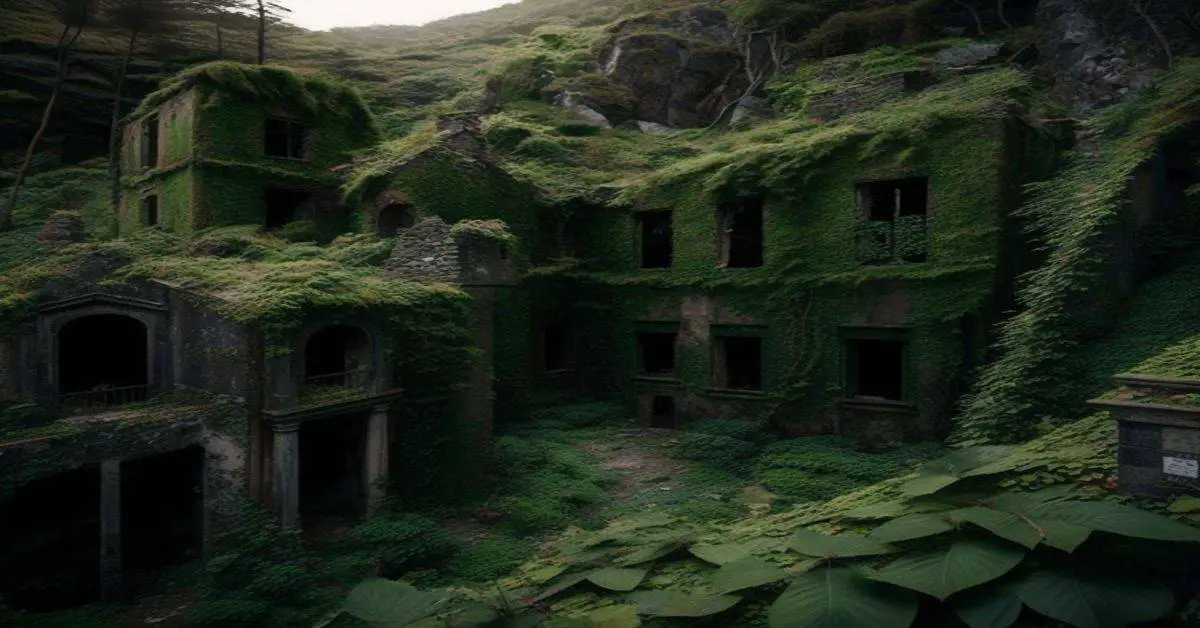Delamar, a former mining town in Nevada, boasts a rich history that is both fascinating and tragic. The town was established in the late 1890s, following the discovery of a significant silver deposit, which resulted in a population boom of over 3,000 residents.
However, despite its initial success, Delamar’s reputation as the ‘Maker of Widows’ was cemented due to the deadly silica dust miners inhaled, leading to many deaths and health complications.
Today, Delamar is a haunting ghost town with extensive ruins and few facades of buildings on the main street. Despite its tragic past, the town offers visitors a unique opportunity to explore the remnants of its history and experience the eerie, abandoned atmosphere of a once-thriving community.
This article will provide an overview of Delamar’s history and silver boom, explore the remaining buildings and ruins, and discuss the impact of silica dust on mining and its effects on the town’s residents.
Key Takeaways
- Due to a big silver strike, Delamar was a booming town in the late 1890s, but the operation was closed soon after.
- The town became a ghost town at the beginning of World War II and is only accessible by 4WD vehicles through gravel/rock roads and dry washes.
- Delamar Dust or silica dust inhaled by miners led to many deaths and the town’s reputation as the Maker of Widows.
- Visitors are advised to use their camera and not their shovels and picks on the remains as the site will likely require a 4WD vehicle and offers lots of exploration opportunities.
History and Silver Boom
The late 1890s saw a massive silver strike in Delamar, leading to the town’s rapid growth and eventual boom. With the purchase of principal claims by Capt. John DeLamar of Montana for $150,000 in 1893, the town quickly became a hub of mining activity, attracting more than 3,000 residents by 1897.
The new owners, under the control of Simon Bamberger, continued to outproduce all other mines in the state until 1909, when the operation was closed. Despite this, the gold mines produced an estimated $8.5 million in gold, cementing Delamar’s place in Nevada’s mining history.
The economic impact of Delamar’s silver boom was significant, with the town becoming a hub of activity and attracting thousands of residents. The boom led to the development of new mining techniques and technology, which helped to extract silver and gold more efficiently. However, the boom was short-lived, and the town became a ghost town at the beginning of World War II.
Despite this, the town’s ruins and remnants continue attracting visitors, who come to explore the extensive ruins and few facades of buildings on the main street, as well as the partially standing rock buildings, mill ruins, and cemetery nestled in the Delamar Mountains range.
Buildings and Ruins
Numerous buildings and ruins can be found throughout Delamar’s main street and the Delamar Mountain range, providing ample opportunity for exploration. Visitors can see extensive ruins and few facades of buildings on the main street, partially standing rock buildings, mill ruins, and a cemetery nestled in the mountains.
The town’s cemetery, farm implements, and other remnants of its past are also available for exploration. While exploring Delamar’s ruins, visitors should remember to use their cameras, not shovels and picks on the remains.
The town is a photographer’s dream, with plenty of opportunities to capture the essence of the Old West in its abandoned buildings and dusty streets. However, it is important to respect the history of Delamar and leave its ruins undisturbed for future generations to enjoy.
Silica Dust and Mining Effects
Silica dust inhalation and its impact on miners were significant concerns in Delamar’s mining operations, leading to many deaths and earning the town its reputation as the Maker of Widows.
The deadly dust was inhaled by men, causing silicosis and ultimately death. Women, children, and animals also suffered from the dreaded dust.
Water was scarce, and the crusher was run almost dry, creating a fine dust that contained silica. Water had to be hauled to all houses except one where it was tapped.
Mining safety measures were implemented in Delamar to address the silica dust hazards. The miners were required to wear respirators and goggles to protect themselves from inhaling the dust. The water sprinkler system was also installed in the mines to keep the dust levels low. The mining companies also provided better ventilation and improved working conditions.
Despite these measures, the mining operations in Delamar came to a close due to the declining profitability of the mines.
The legacy of Delamar’s mining operations serves as a reminder of the importance of ensuring safety in the workplace.
Frequently Asked Questions
Are there any paranormal or supernatural sightings or experiences reported in Delamar?
There is no evidence of paranormal sightings or supernatural experiences reported in Delamar. However, local beliefs suggest that the town is haunted. The lack of firsthand accounts may be due to the town’s remote location and limited access.
What is the current state of preservation efforts in the town?
Preservation efforts in Delamar face challenges due to the remote location and the deteriorating condition of buildings. Future plans include community involvement, fundraising, and seeking grants to preserve and interpret the town’s history.
Delamar’s silver and gold mines brought economic prosperity, attracting thousands of residents. Its success influenced the development of other nearby towns. The town’s legacy is marred by the devastating impact of silica dust on the demographics, particularly women, children, and animals.
Are there any notable individuals or groups associated with Delamar’s history?
Despite Delamar’s boom years, no notable individuals or groups are associated with its history. The town’s impact was mainly economic, with the silver and gold mines producing an estimated $8.5 million.
What other nearby attractions or activities are recommended for visitors to the area?
Outdoor recreation enthusiasts can explore nearby areas such as Kershaw-Ryan State Park, Cathedral Gorge State Park, and the nearby Delamar Dry Lake. Local cuisine options include restaurants in Caliente, NV, about 16 miles away from Delamar.



